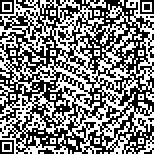乔鸿飞,张巧俊,袁海峰,张妮,惠艳娉,吴仲恒,李雅丽,杨峰,张慧.超短波对糖尿病大鼠溃疡创面碱性成纤维细胞生长因子表达的影响[J].中华物理医学与康复杂志,2015,37(9):653-657
扫码阅读全文

|
| 超短波对糖尿病大鼠溃疡创面碱性成纤维细胞生长因子表达的影响 |
|
| |
| DOI: |
| 中文关键词: 糖尿病 皮肤溃疡 碱性成纤维细胞生长因子 超短波 大鼠 |
| 英文关键词: Diabetes Skin ulcers Basic fibroblast growth factor Ultrashortwave therapy |
| 基金项目:陕西省科委科技攻关课题(2009K17-04) |
|
| 摘要点击次数: 1956 |
| 全文下载次数: 2828 |
| 中文摘要: |
| 目的 探讨超短波对糖尿病大鼠溃疡创面局部碱性成纤维细胞生长因子(bFGF)表达的影响,及其与不同时间点糖尿病大鼠创面新生微血管数量、创面病理学改变的相关性。 方法 取健康成年雄性SD大鼠90只,按随机数字表法分为对照组、糖尿病组和治疗组,每组30只。糖尿病组和治疗组大鼠通过腹腔注射链脲佐菌素55mg/kg建立糖尿病模型,90只大鼠采用去除全皮的方法制作皮肤溃疡模型,对照组和糖尿病组大鼠不进行任何干预,治疗组大鼠行超短波治疗。分别于损伤后第3、7、14和21天,取溃疡创面边缘部分组织与中心部分组织常规行苏木精-伊红(HE)染色,并进行新生微血管计数,计算半数愈合时间及痊愈时间,并在光学显微镜下观察创面病理学改变,用免疫组化法检测创面bFGF的表达情况。 结果 ①对照组创面50%愈合时间和100%愈合时间分别为[(8.94±0.87)和(16.56±1.04)d],治疗组创面50%愈合时间和100%愈合时间[(12.78±1.26)d和(23.25±1.54)d]与糖尿病组[(13.72±1.49)和(26.08±2.23)d]比较,明显缩短,且组间差异有统计学意义(P<0.01)。②治疗组微血管计数在伤后第3、7、14和21天分别为(12.5±1.52)、(17.83±1.94)、(23.5±1.876)和(29.33±2.736)个/高倍镜视野,均多于同时间点糖尿病组,且差异均有统计学意义(P<0.01)。③治疗组的bFGF蛋白表达阳性染色指数在伤后第3、7、14和21天分别为(11.83±1.17)、(23.33±1.51)、(55.50±4.09)和(22.50±1.87),均多于同时间点糖尿病组,且差异有统计学意义(P<0.05)。 结论 微热量超短波治疗可增高糖尿病溃疡创面bFGF的表达量,促进创面毛细血管生成,缩短创面愈合时间,加快创面愈合。 |
| 英文摘要: |
| Objective To observe the effect of ultrashortwave irradiation on the expression of basic fibroblast growth factor (bFGF) and the growth of new capillaries and pathological changes in wounds affecting diabetics. Methods Ninety healthy, adult, male Sprague-Dawley rats were randomly divided into a control group, a diabetic group and an experimental group, each of 30. A model of diabetes was induced in each rat of the diabetic and experimental groups by intraperitoneal injection of 55 mg/kg of streptozotocin. Skin ulcers were then established by scraping. The experimental group was given ultrashortwave treatment, while the other groups were given no intervention. Three, 7, 14 and 21 days after the injury, tissues at the edge and in the central part of the ulcers were collected and given hematoxylin-eosin staining, and microvessels were counted. Any pathological changes in the ulcers were observed under an optical microscope, and the expression of bFGF was detected using immunohistochemistry. Results In the control group, the 50% and 100% healing times were (8.94±0.87)d and (16.56±1.04)d respectively. The 50% and 100% healing times of the experimental group were (12.78±1.26)d and (23.25±1.54)d-significantly shorter than those of the diabetic group. The average microvessel count of the experimental group rats increased from (12.5±1.52) on day 3 to (17.83±1.94) on day 7 and then to (23.5±1.876) on day 14 and finally to (29.33±2.736) on day 21. Those counts were significantly greater than those of the diabetic group at the same time points. The average index of bFGF expression increased from (11.83±1.17) on day 3, to (23.33±1.51) on day 7 and further to (55.50±4.09) on day 21, and then decreased to (22.50±1.87) on day 21, but always remaining significantly higher than in the diabetic group at the same time points. Conclusion Ultrashortwave therapy can increase the expression of bFGF, promote capillary angiogenesis and quicken the healing of diabetics′ wounds. |
|
查看全文
查看/发表评论 下载PDF阅读器 |
| 关闭 |
|
|
|